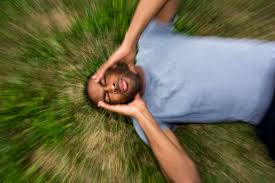According to the Bureau of Labor Statistics, tendonitis causes more than 70,000 people to miss work per year. This is just one of many reasons why it is important to understand the symptoms of tendonitis so that you can avoid not only the pain but the inconvenience it...
LATEST BLOGS
Husband and Wife of 54 Years Undergo Joint Replacement Surgeries On The Same Day
Premier Orthopaedics surgeon, Dr. Jonathan Garino, performed back-to-back procedures on a couple who have been married for 54 years! They shared their same-day surgery journey at the MUVE Center with @6ABC. Watch the incredible story below. Read the full ABC6 story...
What are Non-Surgical Treatment Options for a Herniated Disc
The spine consists of 26 bones called vertebrae and between them are cushion-like pads called “intervertebral discs”. The discs serve as shock absorbers for the vertebrae and help provide stability to the spine. When one of these intervertebral discs loses its normal...
Common Concussion Myths and Misconceptions

Concussions are common among athletes and those who participate in rigorous physical activity. They also occur frequently when people experience motor vehicle accidents. While concussion symptoms can be easy to identify, it’s often difficult for physicians to diagnose the actual concussion. For this reason, there are many myths and misconceptions when it comes to this type of brain injury.
A concussion is a serious brain injury resulting from a blow to the head or the body and alters the way the brain functions. Symptoms include:
- Headache
- Loss of consciousness
- Confusion
- Double or fuzzy vision
- Dizziness
- Balance problems
- Nausea
- Slow reaction time
- Amnesia
- Difficulty concentrating
- Sensitivity to light and sound
- Feeling sluggish, foggy, or groggy
- Feeling emotional
- Irritability
- Sleep disturbances
Being educated is one of the best ways to prevent a concussion or to deal with it if one does occur. The following are some of the most common myths and misconceptions surrounding concussions.
Myth: You always lose consciousness when you experience a concussion.
You DO NOT have to lose consciousness for a concussion to occur. Sometimes people will lose consciousness after a blow to the head, but this is not always the case.
Myth: You will experience concussion symptoms immediately after a blow to the head.
Concussion symptoms may not show up until 24 or 48 hours later. This is why it’s important to continuously monitor yourself or the person who may be dealing with a potential concussion. If you are hit in the head or body, and it’s possible that a concussion has occurred, be sure to remove yourself from the game and avoid participating in physical activity.
Myth: You can return to physical activity a day or two after receiving a concussion.
The worst thing you can do when dealing with a concussion is to participate in any physical activity. This will prolong the healing process and only make your symptoms worse.
Myth: You can take aspirin for a concussion.
DO NOT take aspirin for a concussion because this can increase the risk of bleeding. Instead, take acetaminophen or Tylenol to alleviate headache pain.
Myth: It’s impossible to reduce the risk of a concussion.
There are many precautions you can take in order to reduce the risk of suffering a concussion. First, you’ll need to be fully educated. Learning about how concussions are caused and what you can do to prevent them is the first step toward protecting yourself. Second, you’ll need to wear fitted protective gear, such as a helmet, mouth guard, and padding on your body, when participating in physical activity. It’s important that this equipment fits properly and is replaced when it begins to show signs of wear.
Now that you understand concussions better, you also know how to reduce the risk of suffering one, as well as how to deal with the situation should one occur.
If you have a serious injury and are considering surgery, download our e-book, Your How-To Guide to Choosing an Orthopaedic Surgeon.


